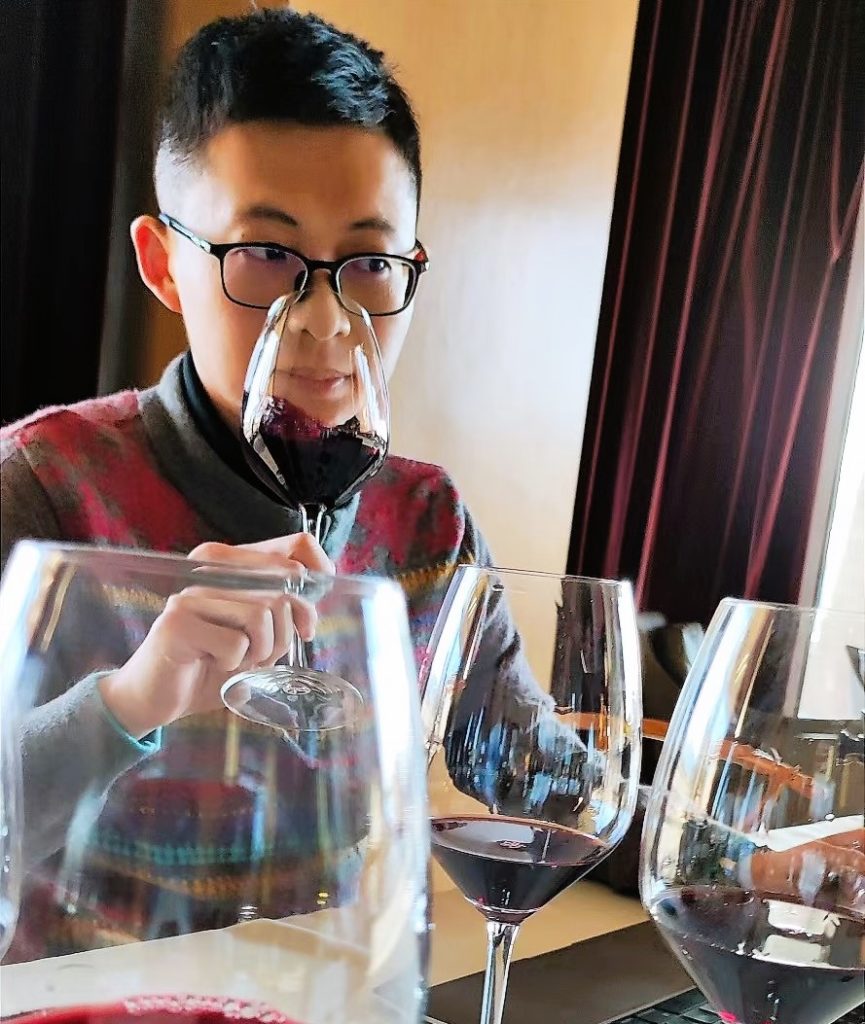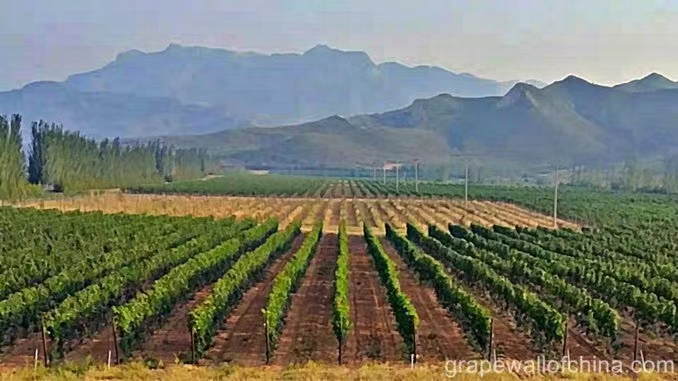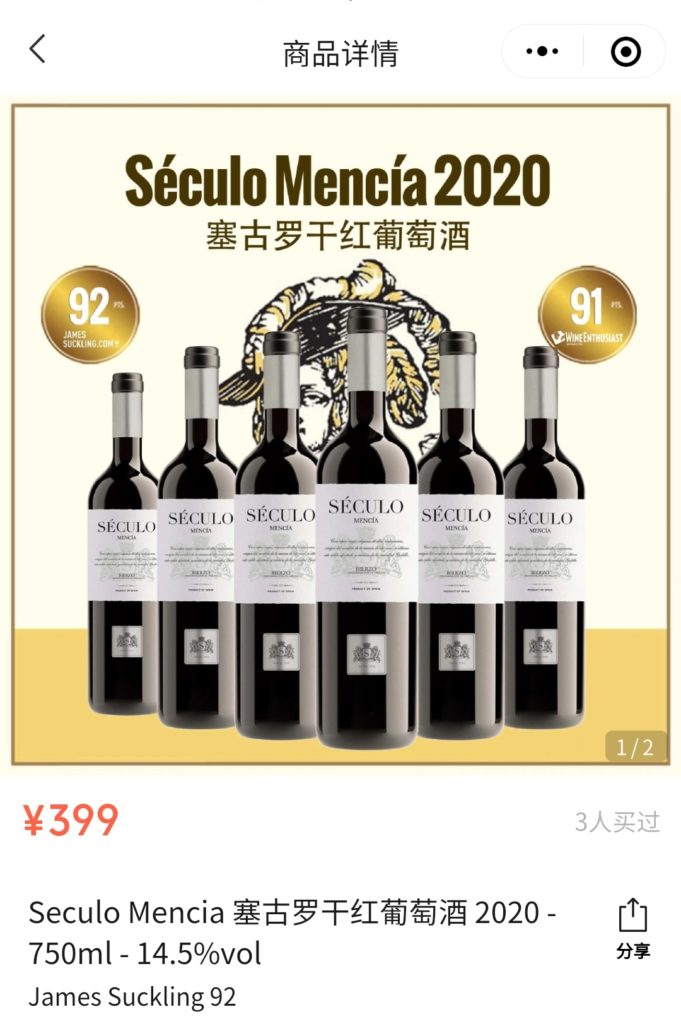
I’ve seen many lists of top Chinese wines over the years but last month’s effort by Shuai Zekun, senior editor for jamessuckling.com, is among the best published in English. Terse, informative, fair.
It’s not just Shuai’s observations of how China’s wine scene is developing—you can find those here. It’s also the blend of wines that constitute the Top 100 and that were chosen after tasting 300-plus bottles from throughout China—more on that below.
There are a wide range of critics in China, with one pole being the kid-in-a-candy-store types with rah-rah enthusiasm and the other pole being the staid types with predictable picks and tones that carry whiffs of Cabernet colonialism. Zhang is in the middle.

I’ve tasted wines with Shuai a handful of times over the past two years, ranging from a visit with home winemaker Zhang Bingzhai (above) to the 39-wine spread at Canaan winery outside Beijing that I wrote about earlier this week.
And while I don’t agree with all his rankings, and generally feel his scores and those of most critics are 5 to 10 points too high, I do appreciate the rationale and effort to taste widely among Chinese producers.
Last week, I asked Shuai eight questions about his 2022 China wine adventures—from the three biggest eye-openers to the generally high prices of local wines to the challenge of creating such a list during the “zero-COVID” era—and his answers are below. But first, a few reasons why I like the list.

The top ten of that top hundred features three wineries I consider crucial to China’s wine scene. Each has ample production, a diverse portfolio, good quality and wines that a large swath of the market can afford. They are Grace Vineyard, Puchang and Canaan, and their presence is a good sign. (I will write a separate post on their importance.)

The report also recognizes the growing number of wine styles and grape varieties used commercially in China. One stunner is the number ten ranked wine: an “orange” wine from Domaine Charme in Ningxia.
As Shuai says below, “Last year, I tasted nearly 8000 wines from all over the world, and this skin-contact Viognier still shines among its orange wine peers.”

In terms of grape varieties, the Top 100 includes everything from Rkatsiteli, Viognier, Petit Manseng and Riesling to Dunkelfelder, Saperavi, Pinot Noir and Petit Verdot, among others, recognizing the growing diversity of China’s wine scene.
(And this only scratches the surface of what is now planted here. The aforementioned Grace, Canaan and Puchang alone have dozens of varieties, including rarer ones in China like Saperavi, Muscat, Beichun, Aglianico, Tempranillo, Muller-Thurgau, Sangiovese and Sauvignon Blanc, some already in commercial use and others in the experimental stage.)

Finally, Shuai covers of good mix of winemakers. One example is Liu Jianjun of Lingering Clouds, who ranks among the “winemakers without wineries” that source fruit and rent equipment to create brands–and who made three pet-nat Chardonnays in 2022, each infused with a different Chinese tea. He is cited in the report alongside other such operations, including Xiao Pu (Petit Garden) and Chateau Witch.
On to the Q&8 with Shuai Zekun.


1 Let’s start with the biggest surprise. You ranked a skin-contact wine from Domaine Charme in Ningxia at number 10. I think many people will be surprised such wines made in China let alone they rate so high.
SZ. It was genuinely outstanding. Last year, I tasted nearly 8000 wines from all over the world, and this skin-contact Viognier still shines among its orange wine peers.
It was a surprise to see that winemakers in my country keep abreast of trends toward more drinkable and fun wines. [Chief consultant] Deng Zhongxiang and the Charme team put a lot of thought into that wine.
They also make excellent and more “conventional” Viognier that is delicious at a reasonable price, but this skin-contact Viognier inspired me, and was a small step up in quality.
2 What three wines came out of nowhere this year, wines you didn’t know about before and really surprised you?
SZ. XiaoLing in Yunnan has a Baco Noir that surprised me, but there isn’t enough volume to sell. The same goes for Charme’s orange Viognier, which is also quite expensive.
There are also two Pinot Noirs from Xigu in Gansu. I think it is fair to say it’s hard to make great wine with this grape in China, but these two peppery Pinots were surprisingly good.
On top of that, some white wines, such as the Viognier and the Chardonnay-led blend from Beijing’s Bolongbao winery, were inspiring.

3 Tea-infused Chardonnay. It’s a thing in China, with Lingering Clouds making three versions—oolong, Longjing and jasmine. What’s your take?
SZ Independent winemakers like Liu Jianjun are adding more color to China’s modern winemaking scene. For the moment, they rent winemaking equipment and have limited sources of grapes, but they are trying their best and blazing new trails.
Liu is known for his Ningxia pet-nat. Adding tea leaves during fermentation is a bold move!
Wine can be intimidating as it is an appreciation that requires a level of expertise and taste.
Innovative wines like the tea-leaf pet-nats break the existing rules and inspire both wine lovers and new consumers. There are more and more wines in China like this.
[See my article about Liu’s tea-infused wines.]

4 I find many wineries still pursue ambitious red blends, seeking to equal Bordeaux and Napa, and are trying too hard, especially as consumer response to the tannins in these wines isn’t great. What do you think?
SZ It is natural that people now want to make “ambitious” and “expensive” grand wines after years of trying to prove China’s potential in fine wine. But that doesn’t mean just going all out for ripeness, new oak, extraction, plush fruit and ripe tannins.
Such ambition doesn’t often translate in reality, and it can be dangerous to make wines just to prove what you can achieve. Those who are successful are often the ones who care about quality and their reputations.
Don’t forget that balance is key, and the grape, terroir and vintage identities are the souls. For those wines overdone with double new oak and extraction, and sold at super-premium prices, less can be more. Outstanding wines should be deliciously drinkable first.

5 Speaking of super-premium prices, what can we make of the generally high prices for fine Chinese wines? I see some wines rated 92 points that cost over RMB400, or even thousands of RMB. Meanwhile I can get six bottles of some Spanish wines, also rated 92 points, for less than RMB400.
SZ Some countries and regions often better value, and Spain is one of the top destinations. We can’t compare it with China.
For China, there is still a long way to go. As I mentioned, there is that ambition and the “face” issue when it comes to pricing. Then there is that anxiety of needing to make quick money to recover the cost.
On the other hand, it is also about the market. Not many Chinese wines are widely exported yet, and the domestic market is not mature enough. This is especially true in smaller cities where consumers still believe wine is a Western luxury, and many people still think a sommelier is a bartender.
I hope Chinese wine prices will significantly drop in the next five to ten years, but it takes time. It is reciprocal between the market and the wine producers.

6 COVID has hit every part of the wine industry since early 2020, from importers and distributors to producers and retailers, and 2022 was no exception. How hard was it creating this year’s Top 100?
SZ. It was indeed challenging. For example, I had to cancel my trips to Ningxia due to the quarantine. There were also wine tasting events that I was curious to attend, but unluckily I got COVID two days before my trip. This year, most of the wines were shipped to my place in Beijing, and the tasting was conducted at home. It was not too bad, though.
7 So, what is the process of rating those wines? How long does it take, how many times do you taste them and how do you get the wines?
SZ This year, I had the chance to taste very slowly and make many phone calls to winemakers. I don’t do a lot of blind tastings, just to be fair. Because we also pay visits to top wineries, and those wines aren’t blind tasted when we go.
But the decision is given to producers. If they want, I will taste blind. I group the wines by grape varieties and sometimes by vintage and region. The wines are usually tasted twice.
I pour a generous amount in each glass first, try it right after with my tasting glass, then revisit each when the whole flight is done to see how it changes with some breathing.

8 I saw your list included lots of Marselan, which some see as ‘China’s grape’, akin to Malbec for Argentina, Pinotage for South Africa and so on. But I also hear grumbling from trade people that it might not be “the best” match for China. Which pisses me off, because why does it have to be the best if it makes really good wine, if consumers enjoy it? It feels like a bunch of gatekeeper bullshit.
SZ No need to feel pissed off. You love Marselan and run Marselan Day. You have a special bond with this grape.
Marselan can be easier to grow and carry the DNA of terroirs and vintages. In general, it is also more consistent in quality.
The threat is the high alcohol in many places, even though it can be perfectly balanced at 15.5 percent or more. Marselan can also be flashy and monotone in many cases, which may overpower a wine, even as a lesser blending component.
I think it is still early to decide Marselan’s potential in China, but yes, it really doesn’t matter if it is not the grape for the finest wines. Usually, this Cabernet Sauvignon and Grenache crossing is rich and consumer friendly. It is a grape that will allow new consumers to develop an interest and a taste in wine, starting from opulence and richness. That is a good sign, and that really matters more than its potential just for fine wines.
Check out Shuai’s report here, including input from winemakers Zhang Jing (Helan Qing Xue), Maxence Dulou (Ao Yun), Feng Jian (Xiao Ling), Zhou Zhushen (numerous), Deng Zhongxiang (numerous), Tian Ye (Domaine Charme) and Denise Cosentino (Longdai). And my Q&8 with him last year.

Grape Wall has no sponsors of advertisers: if you find the content and projects like World Marselan Day worthwhile, please help cover the costs via PayPal, WeChat or Alipay.
Sign up for the free Grape Wall newsletter here. Follow Grape Wall on LinkedIn, Instagram, Facebook and Twitter. And contact Grape Wall via grapewallofchina (at) gmail.com.

Leave a Reply
You must be logged in to post a comment.